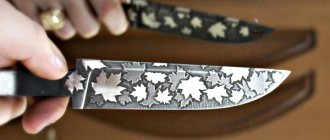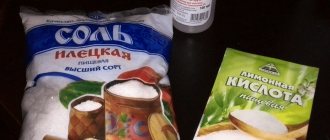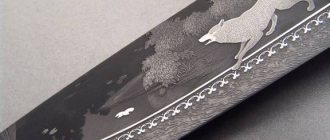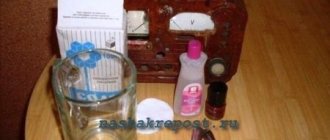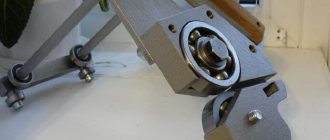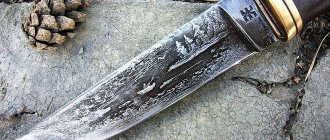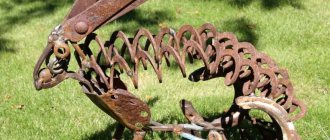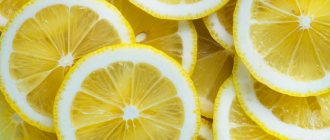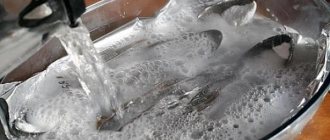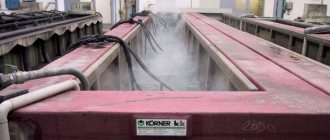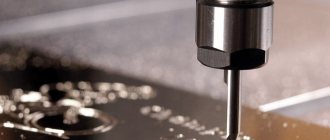Aluminum is perhaps the most common metal in everyday life. In almost every home there are many small objects made of aluminum, this includes various kinds of key rings, gift imitation knives, metal coatings for flash drives, etc. - the list can be continued almost endlessly.
It is quite natural for any man to want to make his small accessories unique. For metal objects, the idea of improvement comes naturally: engraving. To engrave products, you can use a laser engraver. However, this method is not suitable for aluminum.
The melting point of the metal is 600 degrees Celsius. It is difficult to find an engraver for engraving metal with such a melting point, but it is possible. But we have to take into account the oxide film that covers the surface of the metal when it comes into contact with oxygen. And the melting temperature of this film is about 2000 degrees Celsius. This means that the most common method of applying engravings and inscriptions, thermal, is not suitable. It is in such situations that it is worth remembering another method: etching. Note that etching can be both artistic (to create drawings and engravings on the surface of the metal) and technical, with the aim of clearing the metal surface of the oxide film and making the metal suitable for further processing.
Aluminum etching can be done in two ways:
- Electrolytic method.
- Chemical method.
We will analyze each of the methods, as well as their implementation at home, in detail.
↑ Poisoning in ferric chloride
We cover exposed areas of metal that do not need to be etched (for example, the ends) with colorless nail polish (you can steal it from your wife, like I did).
Now we take a photo bath, pour in ferric chloride and throw the body and buttons there with the image DOWN. Rice. 10. Etching.
The solution immediately begins to bubble. Aluminum displaces iron from the solution and it settles right there, at the site of etching. It should be removed with a soft, unnecessary toothbrush approximately once every 30 seconds. In this case, you need to be careful: chips of the photoresist may appear at the edges of the image. If this happens, immediately rinse, dry and correct the chip with a waterproof marker or the same nail polish. However, the varnish can corrode the photoresist, so be careful.
I etched for about 5 minutes. After etching, I get indentations about 0.5 mm deep. We remove the photoresist. When making printed circuit boards, photoresist can be removed with a solution of caustic soda (caustic soda) or slightly diluted “Mole” for cleaning sewer pipes. But this is not suitable for aluminum. It darkens on contact with caustic. If the etched recesses are deep, then you can remove the photoresist with an emery sponge and water, if not very deep, then you can throw it in a bowl with acetone or solvent No. 646 or 647 for 15-20 minutes.
Rice. 11. After etching and removal of photoresist.
Acid etching of aluminum
Due to the fact that very strong acids are used in this process, it is first of all necessary to take increased precautions when working with them. The operator must wear gloves, a mask, an apron
It is important that the room where the process itself takes place is well ventilated. Without certain skills and without certain protective equipment, it is not recommended to work with acids. As noted above, the aluminum product is placed in a container with acid
The most common reagents used for chemical etching of aluminum with acid are hydrochloric or sulfuric acid. When they interact with metal, hydrogen is released. Externally, it looks like this: the surface of the product is covered with small bubbles. But, in principle, this can be prevented if you add a special ingredient to the container in advance. This way the metal will be protected from bubbles by a thin film
As noted above, the aluminum product is placed in a container with acid. The most common reagents used for chemical etching of aluminum with acid are hydrochloric or sulfuric acid. When they interact with metal, hydrogen is released. Externally, it looks like this: the surface of the product is covered with small bubbles. But, in principle, this can be prevented if you add a special ingredient to the container in advance. This way the metal will be protected from bubbles by a thin film.
A very important point: all operations for etching an aluminum product with acid must be performed intensively so that the surface of the metal itself remains intact.
The described method is recommended to be carried out in containers made of wood or concrete. In this case, its inner surface should be lined with acid-resistant tiles so that the walls of the container do not corrode.
This method is not used very often in practice.
Types of etching
There are two main types of etching of metals in general and aluminum in particular: chemical and galvanic. The last method is just artistic.
For chemical use: the product is placed in a container into which a solution of hydrochloric or sulfuric acid has been previously poured. In the same way, the aluminum workpiece is etched with an alkali, for example caustic soda.
And galvanic (otherwise known as electrolytic or electrochemical) occurs thanks to an electric battery. The process itself is carried out in a special bath, where there is an anode and a cathode.
Next, each of the aluminum etching methods will be discussed in more detail. We will also find out which method is the safest at home.
Etching methods
- Chemical
- Electrochemical
Chemical etching is performed by immersing products in a solution of sulfuric or hydrochloric acids. When a product is immersed in acid solutions, not only the oxides present on the metal surface, but also metallic iron interact with them.
With the rapid dissolution of oxides, etching of the base metal should be as small as possible. The relative speed of the processes of dissolution of metals and their oxides depends on the composition of the oxides, the concentration of acids, the temperature of the process, etc. An increase in the concentration of sulfuric and hydrochloric acids accelerates the dissolution of both oxides and pure iron.
To remove the FeO film from iron, it is most advisable to use 10% HCl. The optimal pickling temperature for sulfuric acid should be considered 60°, for hydrochloric acid 40°.
- The FeSO4 salt formed in the bath as a result of etching reduces the etching rate;
- An increase in the FeCl2 salt content in the solution increases the etching rate.
During chemical etching of steel, as a result of the interaction of iron with acids, intense release of hydrogen occurs, which diffuses into the surface layer of the metal, making it brittle and causing the formation of so-called “etching bubbles” on the surface.
To eliminate this phenomenon, special additives (retarders KS, MN) are added to the etching bath, which create a protective film during etching that protects the metal from the harmful effects of hydrogen.
Small items are loaded into the bath in baskets or trays. If before soldering you need to clean not the entire product, but only the soldered seam, then it is best to use a 10-15% solution of hydrochloric acid (apply to the seam with a brush) followed by rinsing with water.
For etching products made of copper and copper alloys, solutions of hydrochloric, sulfuric or nitric acids are often used, but more reliable results are obtained by etching in an 8% solution of sulfuric acid with the addition of 10% chromium. It is recommended to etch products made of aluminum and its alloys in an alkali solution, but sometimes hydrochloric acid is also used for this purpose.
Pickling of products made of nickel and its alloys is carried out in a 20% solution of sulfuric acid with the addition of chromic anhydride at a temperature of 60-80°. Products made from cupronickel are etched in a 10% solution of sulfuric acid with the addition of 1.5% chromium. After etching, a mandatory rinse in hot water with a small amount of cream of tartar is necessary.
Electrolytic etching is performed by immersing a product as an anode (anodic etching) or cathode (cathode etching) in an electrolytic bath.
In case of anodic etching:
- the electrolyte is usually a solution of acids or alkali metal salts
- cleaning occurs by rapid electrolytic dissolution
- Strict adherence to the regime is required to avoid excessive dissolution of the metal.
- The cathode is insoluble materials in the electrolyte, mainly lead and sometimes iron.
For cathodic etching:
- Lead or its alloy with 6-10% antimony is usually used as an anode.
- electrolytes are solutions of acids or their mixtures with alkali metal salts
Cleaning the metal surface from oxides using this method occurs through the action of atomic hydrogen formed at the cathode, which reduces the metal oxides, and gaseous hydrogen mechanically removes them from the metal surface.
In order to avoid corrosion, which can begin from the presence of acids and salts on the product, it is advisable to neutralize the remaining etching solutions after etching.
For this purpose, the products are immersed in a 2.5-5.0% soda ash solution for 1/2-1 minute. at room temperature and after washing in cold and hot water, dry thoroughly.
After such treatment, storing the soldered parts in a dry room will not cause corrosion of their surface. To prevent the prepared product from oxidizing again, it is recommended to solder it as soon as possible.
Pickling is the process of cleaning and processing a metal workpiece. Chemical, acidic, alkaline, electrochemical - there are many ways to perform this technological operation. Where is metal etching used, why is it used in industry, what are the processing methods using this technology, all these issues are discussed in detail in the article below.
Ferric chloride is a reagent for water purification.
The predominant amount of ferric chloride produced is used to treat industrial and wastewater.
The problem of industrial and waste water treatment is one of the most important tasks of environmental protection. Coagulation is one of the common methods of wastewater treatment. The essence of the coagulation method lies in the interaction of substances polluting wastewater with mineral coagulants. Ferric chloride is most often used as coagulants, which, as a result of hydrolysis, forms poorly soluble iron hydroxide Fe(OH)3. During the formation of this hydroxide, inorganic and organic impurities are captured with the formation of loose flakes, which can be easily removed from the treated wastewater. The resulting flakes with a size of 0.5–3.0 mm and a density of 1001–1100 g/l have a very large surface with good sorption activity. During the process of their formation and sedimentation, suspended substances (silt, plankton cells, large microorganisms, plant remains, etc.), colloidal particles and that part of the pollutant ions that are associated on the surface of these particles are included in the structure. The high rate of deposition of hydroxide flakes determines the advantage of ferric chloride over aluminum sulfate. The process of sludge sedimentation with the help of ferric chloride proceeds faster and deeper, in addition, ferric chloride has a beneficial effect on the biochemical decomposition of sludge. The consumption of ferric chloride is 30 g per cubic meter. meter of wastewater. Chemical wastewater treatment reduces the content of insoluble impurities to 95% and soluble impurities to 25%.
When treating wastewater, microorganisms and toxic compounds contained in the water are destroyed by sodium hypochlorite.
Sodium hypochlorite can be used to treat wastewater containing ammonium salts, phenolic compounds, and mercury. The degree of purification reaches 99.9%.
As a result of studies conducted on the effectiveness of disinfectants used in the food industry, sodium hypochlorite was rated as the most effective and economical product. It has shown high effectiveness against almost all types of plant cells, spores and bacteria. Typically, a solution containing 30 – 40 mg/l of active chlorine is used.
Ferric chloride is also used as a catalyst in the processes of organic synthesis, oxidation of petroleum bitumen, and in the production of heat-resistant resins. It is an energetic chlorinating agent and can therefore be used for the selective extraction of individual ore components.
Aqueous solutions of ferric chloride have mild etching properties, so they are used for etching printed circuit boards, copper foil and metal parts before electroplating.
The use of ferric chloride as an additive to Portland cement to accelerate the setting process is well known. The water-cement ratio (W/C) is recommended in the range of 0.4 - 0.5. The addition of ferric chloride allows you to increase the W/C value. The addition of ferric chloride increases the strength of concrete.
Technical characteristics of ferric chloride solution.
1. Mass fraction of ferric chloride - at least 40%;
2. The density of the solution at 20 °C is not less than 1.41 g/m3. cm;
3. Mass fraction of ferric chloride - no more than 1%;
4. Mass fraction of water-insoluble substances - no more than 2%;
5. Mass fraction of hydrochloric acid – no more than 1.5%.
Regulatory documentation: TU 2152-081-56856807-08
Cold technology
To anodize aluminum you need:
- power supply 12 V (battery, stabilizer);
- aluminum wires;
- rheostat;
- ammeter;
- containers for solutions.
First, the preparatory work described above is carried out. Then the parts need to be secured. It should not be forgotten that a film does not form under the fastening element. And suspended workpieces, when lowered into the container, should not touch the walls and bottom.
The anode is connected to the parts from the power source, and the cathode is connected to the capacitance. The current density is selected within the range of 1.6-4 A/dm2. Recommended values 2-2.2 A/dm2. At small values, the process will proceed more slowly, and at large values, a breakdown of the circuit may occur and the coating will begin to collapse.
It is not recommended that the electrolyte temperature rise above 5°C. When anodizing, the electrolyte does not heat up evenly. It is warmer in the center than in the corners of the container, so constant stirring is necessary.
The duration of anodizing using the cold method is about half an hour for small elements. For large parts, the duration may be 60-90 minutes. The end of the process is indicated by a changed color on the surface of the aluminum product. After disconnecting the wires, the part is washed.
Aluminum etching with alkali
Most often, this method uses an aqueous solution of caustic soda (an option with or without additives is possible).
And it is used to clean the surface of an aluminum product from oxide or unnecessary lubricant and obtain a smoother (matte or glossy) surface.
Why is it necessary to clean so thoroughly? To ensure that the finished product (for example, decorative architectural elements, signs) has an ideal surface. This method is also used for deep engraving.
The method of etching aluminum with alkali, on the one hand, is quite inexpensive, but it is very labor-intensive.
Stainless steel pickling
Pickling stainless steel is an important process that ensures the removal of the top layer of material and restoration of the original state.
The bottom line is that after certain work is carried out, defects in the form of welds, oxides and scales can form on the surface of the stainless steel, which can significantly spoil the appearance of the material, as well as worsen the operational and aesthetic properties. A distinctive feature of steel is the presence of an oxide-chrome film, the purpose of which is to protect the top layer.
It is because of this that the above defects arise, which are difficult to interact with reagents. If such troubles occur, you can correct the situation by using a special procedure - etching stainless steel.
Stainless steel pickling procedure
Chemical and electrochemical treatment or etching is considered one of the best ways to clean the top layer of stainless steel.
This procedure perfectly cleans the steel surface from welds, eliminates various types of deformations, and also helps strengthen the structure of the alloy after heat treatment.
In addition to cleaning properties, the procedure ensures the restoration of the passive layer of steel, which is necessary to protect the alloy from structural destruction at elevated temperatures.
Typically, hydrochloric or sulfuric acid is used, after which a mixture of molten alkali is used.
The acid cleaning process has two stages: first of all, the metal is treated with a basic acid composition, and finally the alloy is kept in a bath with a solution of nitric acid.
When processing stainless steel, you should strictly follow the stages of the technological process. The container with the solution in which the alloy is placed should process only the upper layers of the metal, further eliminating existing damage. It is not recommended to allow changes in the macrostructure of stainless steel, as iron may lose its original properties.
What is etching
This is a technology for removing the top layer from the surface of a metal part. The technology is used to clean workpieces from scale, rust, oxides and remove the top layer of metal. Using this method, the top layer is removed to search for internal defects and study the macrostructure of the material.
Using etching, they clean the part and increase surface adhesion. This is done for the subsequent connection of the metal surface with another workpiece, before applying paint, enamel, galvanic coating and other protective coatings.
The method allows you not only to quickly clean the part, but also to create the desired pattern on the metal surface. Using this method, the finest channels and complex images are cut out on a metal surface. You can clean large parts or rolled products. The processing depth is adjustable with an accuracy of several microns, which makes it possible to produce complex parts with small grooves and other complex elements.
Galvanic method
The second method of etching is galvanic. It is simpler and takes place much faster. And the result is a very high-quality surface of the product, clear contours of the design (with an artistic method, like a type of galvanic).
The peculiarity of this method is that it uses a source of electrical energy (4-5 V).
You will also need a bathtub of a size that will accommodate an aluminum product. The material from which the bath is made must be dielectric. The composition of the bath for etching aluminum is a solution of copper sulfate and table salt.
Before starting the process, the workpiece must be cleaned and degreased. Next, solder copper wire to the product with tin and lower it into a solution of caustic soda, and then into a solution of sulfuric acid. After 2 minutes, remove and rinse under hot water. It is prohibited to touch the product with your hands at this moment.
If some areas of the workpiece do not need to be etched, mastic is applied to them. After this, you can begin the process itself.
This method uses two so-called supports, which must be connected to the anode (positive charge) and cathode (negative charge) of the electricity source
It is important that these supports are positioned across the bathtub. A workpiece made of aluminum is attached to the support with the anode, and a workpiece made of another metal is attached to the second one.
All this is lowered into the bath and kept for a certain amount of time. After this, it is washed with turpentine and further processed by grinding and polishing.
Method of blackening aluminum with ferric chloride
I needed to blacken a couple of duralumin rings for macrofur and a couple of aluminum adapters. For such a small number of parts, 15-20 grams of ferric chloride is sufficient.
Ferric chloride in a container for preparing a solution
First you need to dilute it with a small amount of water. For such a small amount of iron, very little water is needed
It is important that the resulting mixture is thick. so that it does not spread but is spread on the surface
I did it by eye - the thicker the solution, the better.
Ferric chloride solution
While the solution is “infused,” we prepare our parts for blackening. We clean them from possible dirt and dust and degrease them. I just washed them with soap under the tap, that was enough.
Part prepared for blackening
Now that the solution is ready, take some kind of stick. for example, for cleaning ears with cotton wool on the tip. and carefully coat the inner surfaces of the adapter. I only ink them, preferring to leave them shiny on the outside. Make sure that the solution remains on the surfaces and does not run off.
Part with ferric chloride solution applied
Next, it takes a little time for the chemical reaction to take place. The duration of the reaction depends on the proportion of the solution and temperature. If you added warm water, the reaction will go faster.
In my case, the aluminum parts turned black after 7-10 minutes. The duralumin took a little longer to darken, maybe 20 minutes, but I didn’t track the exact time.
The duralumin ring has darkened
As a result, the surface became dark gray and matte. Doesn't glare, which is what we wanted.
If you are not satisfied with the result, you can rinse the parts and go through again with the remaining solution. I did this with duralumin, steel and brass, in the hope that it would turn out better.
Dural began to look noticeably better, steel and brass remained the same. You can also leave them spread for a longer time.
After achieving blackening, the parts can be washed with running water and dried. Then you can use them.
The surface of the same ring after washing and drying. I'm happy with the blackening.
After I blackened the macro bellows ring, which was initially shiny, the contrast in the photos improved a lot, especially when shooting black details with long exposures.
Another aluminum part, blackened using the same method
But what happened to the brass: It didn’t darken at all, but became dull and changed color a little
Here is a relatively simple and high-quality blackening method. I hope that it will be useful not only to me, but also to other enthusiasts.
Source
↑ Rolling photoresist
Next, we measure out the photoresist for the body and buttons.
Rice. 3. Film photoresist.
We measure a little with a margin around the edges so that it is convenient to roll. Film photoresist consists of 4 layers: the bottom (it is matte) - polyethylene, then a thin layer of glue, then, in fact, the photoresist itself, and on top there is a glossy protective layer (lavsan). Carefully pry up the matte layer with a needle or scalpel, tear off a strip 5-8 millimeters wide and glue it to the body. It is easier to roll the photoresist along the length of the body.
Yes! One more nuance. It is better to heat the housing over gas to a temperature of approximately 40 degrees. Then the photoresist sticks better. Gradually tearing off the base, we roll the photoresist onto the surface with a hard photo roller, or, at worst, with your finger. We cut off the protruding edges of the photoresist with a file to the body or a sharp knife.
Make sure that no dust particles or air bubbles get under the photoresist. In this place, ferric chloride may get in and there will be a problem. If air bubbles do occur, you can carefully pierce them with a sharp needle and roll them firmly with a photo roller. We do not remove the top protective layer yet, because the photomask may stick to the photoresist (there have been cases).
Rice. 4. Rolled photoresist.
↑ Idea
The milling machine ordered aluminum buttons. The case was purchased from a store. And then the question arose of how to make indelible inscriptions on the buttons and body. I tried to scratch it and fill it with paint. It came out completely “meh”! Can be engraved! So I don’t have a Dremel, but I can’t help but search through friends. Laziness, my friends, is the most powerful engine of progress. After some thought, I remembered that I had once accidentally dripped ferric chloride onto an aluminum radiator. While I wiped away the drop, there was a stain on the radiator and a small indentation. Yeah...
What if you make a stencil from photoresist and then etch it? The guinea pig was a piece of duralumin plate. Everything turned out great!
Pickling at home
Pickling at home is quite a feasible task. The most effective way would be to use an electrochemical reaction to create an engraving. During execution you will need:
- Current source, 9-12 V. The current source must have contacts with the terminals.
- Salt solution.
- Nail.
- Film to protect the surface. Regular tape or colorless varnish will do as a protective composition.
- A tool for applying an image to film. A metal cutter may work, but to create beautiful, symmetrical engravings with clean lines, use a laser engraver. The power of the engraver must be sufficient to cut through the film.
- Dielectric dishes. A cut-off container from a plastic bottle is perfect.
- Acetone and cotton swabs or rags.
In order to prepare a solution of table salt, you need to dissolve 4 tablespoons of salt in a liter of water. Temperature does not have a particular effect on home etching. To achieve the effect, you can use either a slightly heated solution or a cooled container at room temperature.
Procedure:
First of all, you need to prepare the solution in the manner described above. Second step: cleaning the surface of the product. It needs to be wiped with acetone, rinsed with hot water and dried. A protective compound or film must be applied to the metal surface. Using an engraver, cut out the planned engraving
Please note that the pattern can be either convex or sunken. The secret is that for a convex pattern, the engraver needs to cut off the protective compound everywhere except the place of the intended lines
Then, as a result of electrolysis, aluminum is removed from the surface around the intended engraving, and the engraving itself remains intact. If it is the design that is cut out, then it will be removed by an electrochemical reaction. The terminal with a minus sign must be connected to a nail. The nail should be wrapped in rags or cardboard for additional protection. Put rubber gloves on your hands. Dip an object suspended by threads or fishing line into the solution. Set the timer for 5 minutes and dip the terminal and nail into the solution. After five minutes, remove the item. Dry it and clean off any remaining varnish or film with acetone. The engraving is ready.
It is possible and necessary to use the achievements of modern industry for etching metals. This can become a hobby or additional income. But you should always remember about safety measures. In the specific example given of the electrochemical reaction, it is rubber gloves and a rag on the nail before lowering it into the solution.
Features of this method
The solutions used contain from four to ten percent sodium. The temperature when etching with alkali is approximately 40-90 degrees Celsius.
If necessary, a moisturizer or special additive is used to obtain a light foamy coating on the workpiece.
The average temperature at the height of the process is sixty degrees. It is at these thermal parameters that high-quality surface cleaning occurs.
The optimal purity of aluminum is 99.5%, and the concentration of caustic soda solution is 10, 15, or 20%.
Thus, during the reaction, aluminum dissolves in sodium hydroxide, releasing hydrogen. As a result, a composite aluminate is formed, and it exists only in an alkali solution.
Etching process for other materials
In addition to metals, other materials are also subjected to etching. The most common etching of glass is for decorative purposes. Etching is carried out in hydrofluoric acid vapor, the only one capable of dissolving glass. At the preparation stages, preliminary acid polishing of the surface of the product is carried out, then the outline of the future image is transferred to it. Protective coatings for glass are made from a mixture of wax, rosin and paraffins. After applying the protective coating, the workpiece is dipped into an etching tank.
The use of hydrofluoric acid creates a beautiful matte structure on the surface. To obtain a smooth, transparent surface, concentrated sulfuric acid is added to the etching mixture. To obtain a relief, deep pattern, the operation is repeated.
In metal etching, extremely chemically active substances are used - strong acids, alkalis and their solutions. If handled incorrectly, they can cause serious injury and damage to property.
Using rubber gloves
Therefore, when working with them, you need to take special precautions and strictly follow the safety rules when carrying out work:
- Work is carried out only in the presence of good ventilation, preferably a fume hood.
- It is mandatory to use personal protective equipment: rubber gloves and an apron, thick work clothing, a respirator, and a protective face shield.
- Do not place jars containing acids and alkalis on high shelves and cabinets.
- When diluting acids, ACID is POURED into WATER, and never water into acid.
- When working with acid, have a soda solution on hand, and when working with alkali, have a weak vinegar solution to wash areas of the skin where drops of the solution accidentally fall.
- When working using the galvanic method, before starting work, carefully inspect all electrical equipment used for the absence of mechanical damage and integrity of the insulation.
- Have a working fire extinguisher on hand.
If the etching solution comes into contact with the skin, immediately wash the affected area with an appropriate neutralizing solution. If acid or alkali splashes onto clothing, it should be removed immediately.
Rinse the affected area with water
If the etching solution gets on the mucous membranes, you should immediately seek medical help. Delay in such cases can cost health or even life.
If you find an error, please select a piece of text and press Ctrl+Enter.
One of the methods of producing a convex or depressed pattern on metal products, which appeared relatively recently, is called etching. The operating principle of this method is based on the use of electrochemical processes in a liquid electrolyte. If you have artistic abilities, even at home you can get a high-quality pattern with a minimum of required materials and equipment.
When doing etching yourself at home, you will need the following consumables and equipment:
- a product intended for decoration - various cutlery, hunting or camping knives, or simple soap dishes on which simple patterns can be made;
- a container of sufficient volume and convenient shape made of non-metallic materials, suitable for placing the entire product being processed or its part to be decorated. It is most convenient to use glass containers for this purpose, which allow visual control of the processing process.
- a sufficient amount of ordinary table salt;
- nail polish of any color;
- nail polish remover intended for cleaning the treated product;
- source of direct electric current of low voltage. In this capacity, a charger can be used to charge car or telephone batteries.
↑ How to use the recipe?
All this must be mixed before use in glass or plastic containers. The amount of ingredients can be changed proportionally, and more citric acid can be used
.
Etching time about 20 minutes
at room temperature, depends on the area of the board. Increasing the temperature does not lead to a significant increase in activity, so I believe that heating is not necessary
It is important to stir the etching solution to access fresh solution and wash away reaction products
The solution according to this recipe does not corrode hands and clothes
and does not stain the sink. Initially, the solution is transparent, but as it is used, it acquires a “sea wave”, greenish-bluish color.
Photo in progress, sent to Datagor Beso
(Minsk): “Indeed, it poisons quickly, poisons cleanly, and, most importantly, poisons cheaper than with ferric chloride.”
To correct LUT imperfections, a permanent marker, paint marker or nail polish is suitable. The solution is not stored, it is always better to etch in a freshly prepared mixture
.
My version of pickling in a bucket of some kind of food. The solution is used very economically.
They also offer an option on the Internet that involves replacing citric acid with 70% acetic acid. I believe that this can only be done as a last resort, because we end up with a stink and working in a more dangerous environment.
Further processes occurring during etching with alkali
During this process, the amount of caustic soda gradually becomes less. And thus the speed of the process itself decreases, but the viscosity increases.
Provided that no sodium hydroxide was added to the container at all, the reaction can slow down very much. But eventually the brownish or clear aluminum etching solution turns white.
And from this moment on, the speed of the process increases.
As a result of the reaction, aluminum oxide hydrate precipitates, which looks like a suspension. Caustic soda is also released, which is also necessary for the etching process to continue.
Results with the method under consideration
It has been experimentally established that a solution of caustic soda, when used intensively during the etching process, begins to “absorb” aluminum. And this happens until the amount of caustic soda decreases to one-fourth of the original volume. And after this, the process will continue with free caustic soda, fluctuating in its quantity. And this, in turn, depends on temperature, frequency of use and intensity of stops (pauses).
In this case, the hydrate will slowly settle into sediment or form crystals at the bottom and/or sides of the container. The resulting hydrate will be quite dense and will not be easy to remove. Sometimes it tries to settle right on the surface of the heating coils.
There is another important point regarding the aluminum content. When etching products made of this metal in caustic soda, it is necessary to strictly observe the ratio of the amount of aluminum and soda. Because the more aluminum there is, the slower the process itself will occur. From a practical point of view, it becomes clear that it is necessary to constantly increase the amount of caustic soda as the amount of aluminum in the container increases.
Thus, the process of etching aluminum with alkali can be continued continuously. And losses of caustic soda will occur only due to its entrainment with steam.
This method is really applicable from a practical point of view. But there are several nuances that should not be forgotten: remove the hardened hydrate sediment from time to time; clean the filter; remember that the container in which the process is carried out, with constant use, can last no more than two years.
Otherwise, no complications regarding the use of this method were identified.
In total, after chemical etching of an aluminum workpiece, it is necessary to thoroughly rinse its surface, neutralize and lighten it with a 15-20% solution of nitric acid. This process is called pickling.
Chemical etching of metal
Etching is carried out in two ways - chemical and electrochemical.
Chemical etching. During chemical etching, scale and rust are removed from the surface of products made of ferrous metals using etching solutions. Etching is carried out in solutions of sulfuric or hydrochloric acids, sometimes with the addition of nitric, hydrofluoric and other acids. To understand the essence of chemical etching, consider the effect of hydrogen on a surface with iron oxide, i.e., scale.
In sulfuric, hydrochloric, nitric and other acids, hydrogen atoms are an integral part. For example, a sulfuric acid molecule consists of two hydrogen atoms, one sulfur atom and four oxygen atoms. Hydrogen atoms tend to be released from the acid as soon as ferrous metal is placed in it. The scale formed on the surface of products made of ferrous metals has pores and, in addition, it covers the surface of the metal unevenly, so sulfuric acid reaches the upper layers of the base metal through the pores and acts on the base metal in a dissolving manner, and from the action of the acid on the base metal there is a vigorous release of hydrogen . The hydrogen formed under the scale crust, due to the ever-increasing pressure, loosens the scale on the surface of the product and knocks it off the surface, which helps clean the metal surface, i.e., etching.
When etching the surface of a product with a dense film of scale that prevents the penetration of acid into the metal, solutions of hydrochloric acid are usually used, since solutions of sulfuric acid act on such scale much more slowly. The content of sulfuric and hydrochloric acids in etching solutions does not exceed 20%; the use of more concentrated solutions can lead to significant dissolution (over-etching) of the main part of the metal. When overetched, the metal has a black and deeply pitted surface.
Hydrogen, penetrating into the upper layers of the metal, contributes to the formation of etching brittleness, because of this the quality of the metal deteriorates.
In order to eliminate etching fragility and reduce the possibility of metal over-etching during the etching process, either so-called etching additives (KS, ChM, UNICOL), obtained by special processing of waste from meat plants and other food enterprises, or organic substances called inhibitors (retarders) are added to the solutions. . During the etching process, an additive film or inhibitor blocks access to hydrogen into the intercrystalline spaces of the metal and stops the chemical effect of the acid on the metal.
Chemical etching of the surface of products made from carbon steels is carried out in solutions of sulfuric or hydrochloric acids. For etching the surface of low-carbon steel products, pickling solutions of the following two compositions are used: first - sulfuric acid up to 20%, KS additive 0.1-0.2%, water - the rest; the heating temperature of the first solution is the lowest 16-20° C, the highest 50-60° C; second - hydrochloric acid up to 20%, KS additive 0.1-0.2%, water - the rest; The heating temperature of this solution is 30-40° C.
For etching the surface of carbon steel products, a solution of the following composition is often used: sulfuric acid 200 g, sodium chloride 50 g, liquid KS additive 10 g, water 1 liter. The heating temperature of this solution is 50-60° C.
For this purpose, an etching solution consisting of 150 g hydrochloric acid, 10 g liquid KS additive, and 1 liter of water is also used. The heating temperature of the solution is 30-40° C.
For etching the surface of products made from stainless and heat-resistant steels, an etching solution of the following composition in parts by weight is used: sulfuric acid 14, hydrochloric acid 13, nitric acid 1, water 75. The heating temperature of the solution is 50-70 ° C.
Etching the surface of products made from carbon steels is carried out in the following sequence: filling the bath, loading the bath, etching the product, washing the product, quality control of the etching.
Pickling of non-ferrous metals
Copper and alloys based on it are etched using sulfuric, hydrochloric, phosphoric or nitric acids. The process is accelerated by solutions of chromates or nitrates. The first stage is the removal of scale, then the brass is directly etched. Aluminum (and its alloys) are etched in a caustic alkali solution. For casting alloys, nitric and hydrofluoric acids are used. Spot welded workpieces are treated with phosphoric acid. Titanium alloys are also etched in two stages. First - in caustic alkali, then in a solution of sulfuric, hydrofluoric, nitric acids. Titanium etching is used to remove the oxide film before electroplating. Molybdenum is treated with a solution based on sodium hydroxide and hydrogen peroxide. In addition, metals (such as nickel, tungsten) are etched using water, hydrogen peroxide and formic acid.
↑ Making a photo template
Next, use any convenient program to prepare a photo template and print it on transparent film for printers. When printing, we indicate the maximum contrast and minimum brightness, but here you have to try. I have an Epson RX610. The settings are as follows: print quality “Best Photo”, “Shades of Gray”, paper type “Epson Matte”, brightness: -25, contrast +25. Photoresist is negative! That is, where there is no paint on the template, the photoresist will glow and will not wash off during development! Be careful.
Rice. 5. Photo template. I use film sparingly. Therefore, I print different projects on one sheet while there is space left.
Dear friends and colleagues!
Congratulations on our professional holiday - Chemist's Day!
Chemistry is a great science that captivates you completely and forever. Requires attention, careful and creative attitude.
Firmly remember and follow the commandments of the electroplating technologist:
1. Keep the electrolyte clean and tidy, just like your body.
2. I came to the regime - don’t flutter: the best is the enemy of the good.
3. The coating is not going well - look at the root, change the skimming agent!
5. Honor regulatory documents as sacred scripture.
6. If you want to live without problems, convert the designer to your faith.
And let your love for chemistry be mutual!
Koroleva Galina Vladimirovna
Process description
The point of the aluminum etching reaction is to remove a thin layer of metal from the surface. In industry, this is how they get rid of cracks, chips, scratches and oxide film on the surface. The procedure helps prepare the metal for further processing.
When it comes to chemical etching, aluminum is dissolved by acid or reduced to alkali. The holding time of the metal depends on the solution and is always strictly standardized. If the reaction time is not observed, the solution will remove too much metal. Within the industrial sector, losses of a few grams per reaction can grow into total losses of tens or hundreds of tons.
If we are talking about artistic grass, then the electrolytic method is more often used, which involves the reduction of aluminum in an electrolyte solution. In order to create an inscription on the metal surface, it is first coated with a protective compound or film. A prerequisite is that the film adheres tightly to the metal surface. The next step is to make a hole in the film or composition in the shape of the future engraving. As a result of an electrochemical reaction, the solution collects metal exclusively from the future inscription. The reaction time for aluminum art etching is also limited; too deep engraving can cut your fingers.
Both in home creative environments and in industry, the use of protective equipment is mandatory. If we are talking about a chemical process, the following personal protective equipment is required:
- Thick rubber gloves.
- Respirator with eye protection.
- Apron.
It is also worth remembering that acid baths are made of wood or concrete; the service life of one bath does not exceed 2 years, regardless of the activity of use. Aluminum etching solution
Chemical weeding can be carried out in the following solutions:
Ferric chloride. Etching aluminum in ferric chloride involves the active process of releasing the metal into acid and its deposition at the site of etching. This means that the engraved area will have to be constantly cleaned to free it for further reaction. Therefore, in industrial conditions, ferric chloride is used very rarely for etching. But the solution is quite suitable for home use. Etching should be carried out at a rate of 0.1 mm per minute. Engravings with a depth of 0.5 mm, filled with paint, look quite aesthetically pleasing. Caustic soda. Etching aluminum with caustic soda involves the use of household chemicals. The most suitable is the dry variation of the anti-sewer blockage product “Mole”. A standard package of the product is poured into a faceted glass of warm water and etching is performed. For a beautiful engraving or cleaning a metal surface, 3-4 minutes of reaction is enough
Please note that the reaction produces harmful gases and should therefore be carried out in a well-ventilated area. The optimal solution temperature is 70-80 degrees. Orthophosphoric acid
Etching aluminum with phosphoric acid involves the use of 10-20% phosphoric acid. For the reaction, the solution is heated to 40-50 degrees. Depending on the initial state of the metal, the reaction takes from 40 seconds to 2-3 minutes. The use of alkalis, orthophosphoric and hydrochloric acid is unacceptable in electrical engineering. If in the future you plan to use an aluminum part for use in electrical components or homemade radio assemblies, it is better to use a different etching mixture. Nitrogen. Nitric acid etching is not suitable for use in artistic engraving. Nitric acid is used, usually after alkali or to prepare the surface before painting. As a result of etching of metal in alkali, a dark layer of metal sludge is formed on the surface, which is formed as a result of the reduction of the metal into the volume of the alkaline solution. In order to give the product an aesthetic appearance, a 15-20% solution of nitric acid is used. Optimal etching is at room temperature of the solution. 2-5 minutes are enough for the entire reaction.
As mentioned earlier, an oxide film forms on the surface of aluminum. Most chemical solutions are used for the so-called brightening of the metal surface. In other words, to remove sludge from past manipulations or prepare the metal for future processing.
For home etching, you can use acids. But for artistic engraving it is better to use the electrolytic method. Also, when using acids, it is worth considering the requirements for room ventilation.
Maintaining the stability of the E6 bath
To obtain particularly matte surfaces, a high aluminum content is required, which can reach 200 g/l. With such a high aluminum content, special attention to bath stability is required [1].
Stable black bathtub E6
Just one glance is enough to determine whether the E6 bath is still stable. If it has a rich black color (Figure 1), then you can be sure that the bath is sufficiently stable. Of course, this visual assessment must always be confirmed by regular chemical analysis of the bath composition.
Figure 1 – E6 bath of rich black color in a stable state [1]
Gray bathtub E6 - what's going on?
If the E6 bath has turned gray instead of rich black, then you need to react immediately. In this case, the process of destabilization has already begun. During this process, white, poorly soluble particles of aluminum hydroxide fall out of solution. If their proportion in the bath continues to increase, then the bath becomes increasingly gray, that is, the black color changes to dark gray, then medium gray, then light gray, until it becomes completely white. In the light gray and white condition, the bathtub is considered lost and must be completely restored, which requires significant amounts of money, work and time. Therefore, the occurrence of such a condition should be avoided in every possible way.
Figure 2 – Dark gray bath E6 – beginning of destabilization [1]
How to save an unstable gray bathtub E6?
If the E6 alkaline bath has turned slightly gray, you must:
- Immediately perform a complete chemical analysis of the bath.
- The instability of the bath will be indicated by a decrease in the aluminum content, since part of the dissolved aluminum has already been released from the solution in the form of poorly soluble aluminum hydroxide.
- At the same time, the content of sodium hydroxide will increase, as it is released during destabilization of the solution.
Figure 3 – Chemical reaction of the destabilization process [1]
It would be a mistake not to add sodium hydroxide to the bath, although its content is most likely still within the specified range. Low alkalinity contributes to further destabilization of this bath [1]:
- A large amount of a special additive (for example Alfasatin) must be added to the gray bath for additional stabilization, for example twice as much as usual.
- It is recommended to increase the alkalinity of the bath by adding sodium hydroxide to further stabilize it.
These stabilization measures ensure that:
- no further precipitation of aluminum hydroxide occurred and
- The aluminum hydroxide remaining in the bath solution was gradually removed from the bath with the treated aluminum surfaces.
As a result, the bath should gradually return to a stable state (black). During this time, monitoring the bath chemistry is especially important. If the solution in the bath turns black again, the stabilization process can be considered successful.
Types of etching
Depending on the substance used to destroy the surface of the material, the following etching methods are distinguished.
1. Chemical method (also called liquid method). In this case, special acid-based solutions are used. In this way, ornaments and inscriptions are applied to alloys.
2. Electrochemical etching of metal - involves the use of an electrolyte bath. It is filled with a special solution. Lead salts are also often used to prevent over-etching. This method has a number of advantages. Firstly, the drawing is clearer, and the time required to complete the process is significantly reduced. In addition, this metal processing is economical: the volume of acid used is much less than with the first method. Another undoubted advantage is the absence of harmful gases (the mordant does not contain caustic acids).
3. There is also an ion plasma method (the so-called dry method). In this case, the surface is damaged minimally. This method is used in microelectronics.
Steel pickling
This treatment is mainly used to remove scale and various oxides. This procedure requires careful adherence to technology, since over-etching of the base metal is undesirable. The process uses both chemical methods and electrolyte baths. Hydrochloric and sulfuric acids are used to prepare solutions. All parts require thorough degreasing of the surface. Even a small fingerprint can ruin the workpiece. A varnish based on rosin, turpentine, and tar is used as a protective coating.
However, it is worth remembering that the components are flammable substances, so preparing the varnish requires great concentration and caution. After the metal processing is completed, the etching process itself occurs.
Upon completion, the part must be cleaned of varnish.
